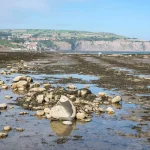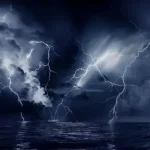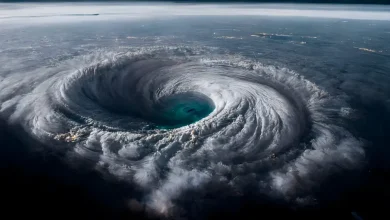Tsunami: Understanding Nature’s Most Powerful Wave

A tsunami is one of the most destructive natural phenomena on Earth. These massive waves, often triggered by underwater seismic activity such as earthquakes, have the potential to devastate coastal areas in a matter of minutes.
While they are relatively rare, their impact can be catastrophic, causing widespread damage and loss of life. Understanding what a tsunami is, how it forms, and how to prepare for one can make the difference between life and death.
What Is a Tsunami?
A tsunami is a series of large ocean waves typically caused by significant disturbances underwater, such as earthquakes, volcanic eruptions, or underwater landslides. Unlike normal waves generated by wind, tsunamis can travel at high speeds across vast ocean distances with minimal loss of energy. Upon reaching shallow waters near the coast, the waves can rise dramatically, sometimes reaching heights of over 30 meters (100 feet).
The term “tsunami” comes from the Japanese words tsu (harbor) and nami (wave), reflecting how the waves appear and grow taller as they approach the shoreline. Despite their devastating nature, tsunamis in the open ocean are often hard to detect because they may only be a few centimeters high and travel unnoticed at speeds up to 800 kilometers per hour (500 miles per hour).
How Do Tsunamis Form?
Tsunamis are most commonly caused by underwater earthquakes, especially those occurring in subduction zones, where one tectonic plate slides beneath another. When an earthquake shifts the seafloor, it displaces a massive amount of water. This displacement creates a series of waves that spread out from the epicenter of the disturbance.
The steps in the formation of a tsunami generally follow this process:
 Ocean Tides: The Rhythmic Movements of the Sea
Ocean Tides: The Rhythmic Movements of the Sea
- Seismic Activity: An underwater earthquake, volcanic eruption, or landslide shifts a large portion of the ocean floor.
- Displacement of Water: The movement of the seafloor pushes a column of water upward, creating ripples that radiate out from the point of disturbance.
- Wave Propagation: The energy from the disturbance spreads, generating a series of waves that can travel across the ocean at speeds comparable to jet planes.
- Wave Amplification: As the waves approach land, the ocean floor becomes shallower, causing the waves to slow down and grow in height dramatically.
- Landfall: When the waves reach the coast, they can crash ashore with tremendous force, flooding coastal areas and destroying everything in their path.
Types of Tsunamis
While all tsunamis share the same basic formation process, they can vary significantly in size and origin. Some of the primary types of tsunamis include:
1. Tectonic Tsunamis
These are the most common type of tsunami, caused by undersea earthquakes along tectonic plate boundaries. The largest tsunamis in recorded history, such as the 2004 Indian Ocean tsunami, fall into this category.
2. Volcanic Tsunamis
These occur when volcanic activity either displaces water or creates a significant landslide that impacts the ocean. For instance, the 1883 eruption of Krakatoa caused a massive tsunami that killed over 36,000 people.
3. Landslide Tsunamis
Landslides, either triggered by earthquakes or by the collapse of a large section of land into the ocean, can generate tsunamis. These waves tend to be more localized, but they can still be highly destructive in the immediate area.
4. Meteorite Impact Tsunamis
Though extremely rare, a large meteorite impact in an ocean or sea could displace enough water to create a tsunami. This type of event is believed to have contributed to mass extinction events in Earth’s distant past.
The Stages of a Tsunami
Understanding the stages of a tsunami helps in recognizing warning signs and reacting appropriately:
 Catatumbo Lightning: Witness the Phenomenon
Catatumbo Lightning: Witness the Phenomenon
1. Initiation
The tsunami begins with a sudden vertical displacement of water due to seismic or volcanic activity. This initial disturbance creates a series of waves that propagate outward.
2. Split
As the tsunami waves move away from the epicenter, they split into two directions: one set of waves heads toward the coast, while the other travels further out into the ocean.
3. Amplification
As the waves near shallow coastal waters, they begin to slow down. However, as they slow, the energy in the wave compacts, causing the wave height to increase dramatically.
4. Run-up
This is the final stage when the tsunami reaches land. The water surges up onto the shore, sometimes flooding inland for several kilometers. The size and force of the run-up determine the tsunami’s destructive power.
The Impact of Tsunamis
The damage caused by tsunamis can be immense. These waves have the power to destroy buildings, sweep away vehicles, uproot trees, and cause massive flooding. In addition to the immediate physical destruction, tsunamis also result in long-term consequences such as:
- Loss of life: Thousands of people can be killed by a tsunami, especially in densely populated coastal areas.
- Economic damage: Infrastructure, homes, and businesses are often completely wiped out, leading to billions of dollars in losses.
- Environmental damage: Coastal ecosystems, including coral reefs, wetlands, and mangroves, can be severely damaged or destroyed by the force of the waves.
- Contamination: Floodwaters can mix with sewage, industrial waste, and chemicals, leading to contamination of freshwater supplies and health hazards.
The 2004 Indian Ocean tsunami is one of the most devastating examples of a large-scale tsunami, resulting in over 230,000 deaths across multiple countries, including Indonesia, Thailand, and Sri Lanka.
 Firefly Synchronization: A Mesmerizing Phenomenon in Biology and Physics
Firefly Synchronization: A Mesmerizing Phenomenon in Biology and Physics
How to Stay Safe During a Tsunami
While tsunamis are often unpredictable, there are ways to minimize their risks and stay safe:
- Heed Warnings: Pay attention to tsunami warnings issued by authorities or through mobile alerts. If you are in a tsunami-prone area, stay updated on seismic activity in the region.
- Recognize Natural Signs: An earthquake near the coast, a sudden receding of water, or an unusual noise from the ocean can all be warning signs of an impending tsunami. If you notice any of these signs, move to higher ground immediately.
- Have an Evacuation Plan: If you live in a tsunami-prone area, know the evacuation routes and the nearest safe locations. Practice evacuation drills with your family to ensure everyone knows what to do in case of an emergency.
- Move to Higher Ground: As soon as you receive a tsunami warning or feel a significant earthquake near the coast, head inland or to higher ground without delay. Don’t wait for the wave to arrive, as tsunamis can strike within minutes of an earthquake.
- Stay Away from the Shore: Even after the initial wave hits, additional waves may follow. Avoid returning to low-lying areas until local authorities confirm it is safe.
Tsunamis are powerful and dangerous natural disasters, capable of causing widespread devastation in a very short amount of time. Understanding how they form, recognizing warning signs, and knowing how to react in the event of a tsunami can save lives. While we can’t prevent tsunamis, being prepared and informed is the best defense against their destructive potential.






